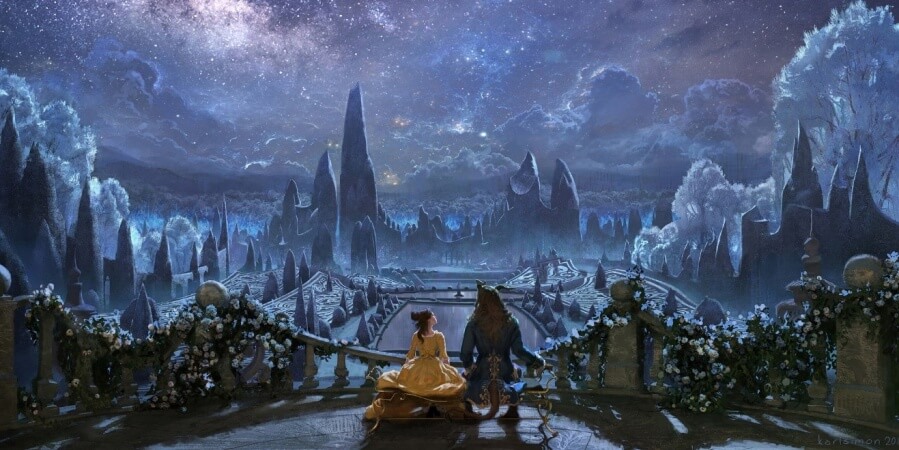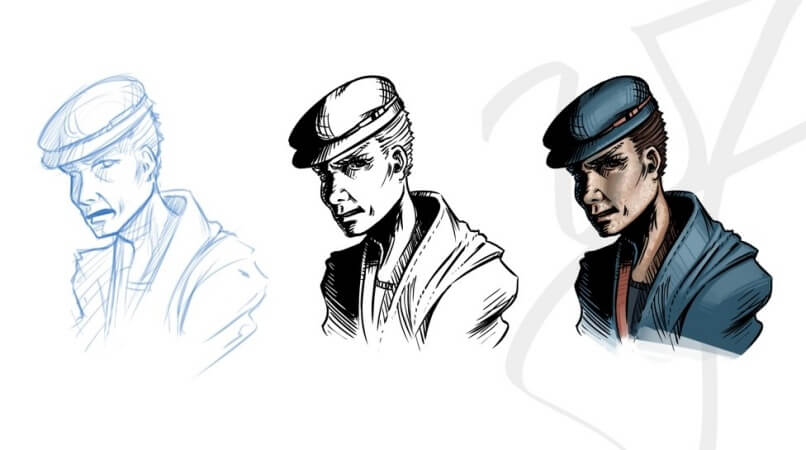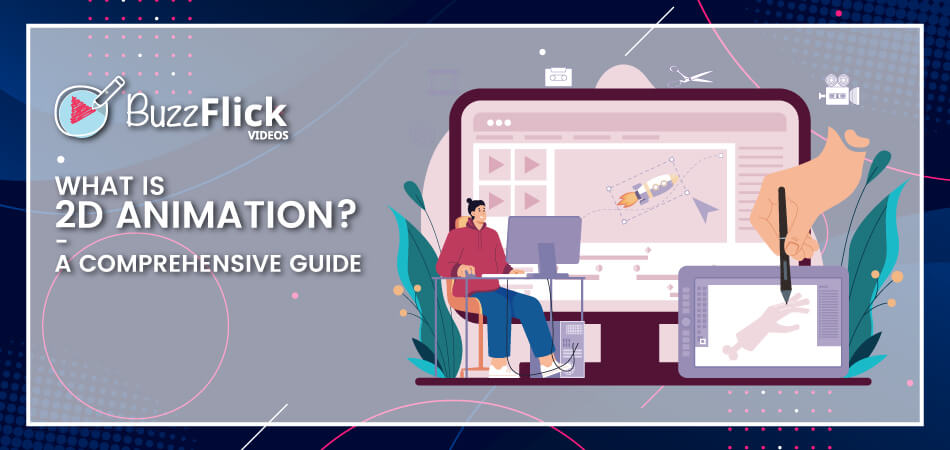The world of animation is constantly evolving, and the 2D animation industry is no exception.
With advancements in technology and the increasing demand for engaging visual content, 2D animation has become a key player in the entertainment, gaming, and advertising industries.
From hand-drawn classics to digital masterpieces, 2D animation continues to captivate audiences of all ages and has proven to be a timeless art form.
In recent years, we’ve seen a resurgence of interest in traditional 2D animation techniques, as well as the incorporation of new tools and techniques that allow animators to bring their visions to life like never before.

It’s an exciting time to be a part of the 2D animation community, and the future looks bright for this dynamic and creative field.
Get ready to bring your imagination to life with the power of 2D animation! Whether you’re a seasoned animator or a beginner looking to start your journey, this guide will take you on a thrilling ride through the world of two-dimensional magic.
From creating characters to making them dance, we’ll explore the tools and techniques needed to create mesmerizing animations that will leave your audience spellbound.
So, strap in, and let’s get started on this exciting journey of 2D animation.
Is 2D Animation Dead?
Many people think 2D animation is dead, and Disney’s announcement set this in stone, but the reality is that 2D animation is only dead on the big screens and in the movie industry.
2D animation is still widely used for explainers, product demos, and corporate animated videos of different types.
The short and simple answer to this question is no. While there is a recent rise in the demand for 3D animation videos in the entertainment industry, 2D animation still has great potential in different niches.
From 2D games to more business-oriented videos, the 2D animation industry is far from dead.
Video content is not going anywhere; it’s engaging and interactive and provides a great alternative for users who hate reading long articles (the irony is not lost on me).
What is 2D Animation?

The term 2D animation means the combination of images of different widths and heights which creates an illusion of movement in a two-dimensional world without adding depth to it.
Now you may think, why this process is called 2D animation? Well, because the width and height are only two-dimensional elements and variables. There are various other genres of 2D animation, which we’ll talk about in the next section.
There are various ways to break down the styles of 2D animation. But in a classic way, it comes down to two primary categories:
Traditional animation
This type of animation is commonly known as classical animation or hand-drawn animation. It is an animation technique in which all the frames are put together to create an illusion of movement.
The frames are first put down on paper and later on, the animator draws them by hand.
Modern animation
Unlike the traditional animation method, modern animation is all about computers and their ability to take it further when creating animation.
Moreover, various 2D animation software are launched which animators can use to create characters and environments and later on animate them.
2D animation videos are used as an artistic medium for story-telling and conveying messages through characters and objects that move in a two-dimensional environment.
The key aspects of 2D animation services include:
- Sketching designs
- Designing characters
- Developing storyboards
- Creating special effects
- Animating scenes
- Transitioning backgrounds

The goal of an animated video is to communicate a story or message and engage the audience by creating a coherent visual experience.
The Difference Between 2D and 3D Animation

The main difference between 2D and 3D animation is that the latter is more realistic as it has more detailing of the objects in the video with regard to height, depth, and width. In 2D animation, visuals are built in a flat, two-dimensional space.
The difference between 2D animation and 3D animation has to do with dimensions. A 2D object can only be measured by its height and width and is projected on a surface, such as a wall, paper, or screen.
On the other hand, 3D objects have their surface and can be measured by their length, depth, width, and height.
To understand this difference, you can visualize the difference between a square drawn on paper and a cube in your hand.
While the square is 2D, the cube is 3D. So, the difference between 2D and 3D animations is simply the kind of objects you’re dealing with.
2D animation requires techniques such as foreshortening and perspective to create visual space and depth perception in the animation.
Some of the most iconic TV shows, such as The Simpsons, are typical 2D animations. In its application, 2D animation requires drawing images and photographing them one image at a time to create an illusion of movement.
On the comparative, 3D animation can only be done on a computer. 3D animation includes techniques that are impossible in 2D animation, such as rotation angles and object volume due to their two-dimensional limitation.
3D animation is closer to reality, where you work with more lifelike objects. There’s more room to work on.
For example, camera angles, object textures, and lighting are a few things that are much denser and more complicated to do on 3D objects than on 2D objects.
Where is 2D Animation Used?
There are many applications of 2D animation. Some of the popular ones are:
- Educational videos
- Animated ads (product commercials)
- Music videos
- Full-length feature films
- Short feature films
- Original animated video
- TV specials
- TV series
- Television bumpers
- Video game trailers
- Video games
- Mobile phone images
- Industrial videos
- Architectural animation
- Multi-path movies
- Intro, outros, logos, and credits for banners, other structure avatars, and web advertising
What are the Different Types of 2D Cartoons?
This might be a bit of a surprise for you to know that 2D animation is not limited to entertainment. Because of its low production cost, versatility, and higher engagement rates, it’s now commonly used by businesses for branding and marketing purposes.
Let’s take a look at some of the common types of animation used in the realm of video marketing:
Infographic
If you have a lot of information on your end and you’re running short on time, infographic animations or animated slides are a great way to do both.
Complex descriptions and subjects that need vibrant illustrations and graphs are also what infographics shine.

Stop Motion
Stop-frame animation or stop-motion animation is a cinematic technique or process used commonly to create an illusion of movement of real-world objects.
In this type of animation, the objects are physically manipulated and photographed whenever they are moved between frames.
Then the photographed images are shown frame by frame at 10fps. This gives an illusion that the objects are real and moving.
Motion Graphics
At times, brands don’t need a story-driven or character animation or put in other words, they don’t have the budget for it.
In such a scenario, motion graphics are used. It’s a sweet combination of text and graphics for animated explainers, logos, and titles.
It’s one of the best ones to go with in this instance. The set of skills required to create motion graphics is different from what is required for other types of animation.
You don’t have to know about the mechanics of the body or acting to create a motion graphics video. One of the key series, explainer video production company produce is motion graphics for brand videos.
Computer Animation
Computer animation also known as CGI animation is another modern animation technique used by animators to generate animated images via computer graphics.
Computer animation is divided into two main categories – computer-generated animation and computer-assisted animation.
The computer-generated animation is designed completely on a computer system using different 3D graphics and animation software. Whereas, in computer-assisted animation traditional animation is computerized.
Whiteboard Animation
In whiteboard animation simulating black lines are drawn on a whiteboard/background showcasing the ideas or concepts in action.
The popularity of these types of videos lies in their effectiveness because the dynamic graphics and animation together do an amazing job of explaining complex messages easily while keeping the audience engaged.
How is 2D Animation Created?
There’s a diverse animation process that you have to follow to create engaging videos. We’ll be majorly focusing on the 2D animation process that you can follow to create a 2D animation video.
2D animation requires the use of specialized 2D animation tools and it follows a set process including aspects like Storyboarding, animation, layout, audio, visuals, etc.
The animators are an integral part of the whole process, doing everything from creating rough sketches of initial ideas to the finalization of the video.
This job is just one part of the production pipeline, which is divided into three parts:
- Pre-production
- Production
- Post-production

In each of the above-mentioned stages of animation, there are so mini-stages that act as a building block when making an animated video.
2D Animation Pre-Production Stage
This is the first and most important part of the animation process. If you get this done right then your final product will be of the best quality.
Following are some of the stages of the pre-production process of 2D animation:
Seeking inspiration
Whether you’re making an animated video or a movie, the first thing you need to figure out is a story.
But, this is not as easy as it sounds. It’s one of the most challenging tasks to come up with a great story that not only delivers the message but touches the heart of the audience.
The story is one of the most significant parts of any animated video. If you have a great storyline but not a good animation still the final product will be good but if your storyline is not good then even the top-notch animation won’t be able to save you.
So how to come up with a great story? First, find inspiration which you can get from observing things around you.
Inspiration can come from anywhere and everywhere. Even a poem, song, video, quote, or your surroundings can inspire you.
You can also think of any person you have met or any places you have visited and thrilling experiences you went through.
Just grab all the ideas together and create a great story.
Idea development

Now it’s time for the creative heads to sit together and think of all possible alterations they can or should make to the story they have decided to animate.
This is a different way through which you can add some depth to it such as the plot, the message to want to deliver, the characters, etc. The aim is to make the story simple and appealing to the audience.
Moreover, this is the stage when your idea is finalized and moved into the very important i.e. scripting.
Scripting
Now, all the dialogue or narration that will be part of the animation is written. When creating a script, it’s imperative to take the audience into account.
It’s worth noting that the script goes through a lot of changes and evolves until the finalization.
Production scheduling
Just like how you keep in place all the ingredients before you start cooking to ensure you have everything before you start the process, similarly, you need to plan before you start the project.
You need to figure out when you will start the project, what will you need during the process, and by when it will be completed.
Though it sounds quite a tedious task to do, organizing everything before starting the process can be very beneficial in the long run.
Following are a couple of things that you should plan ahead:
- Preliminary data
- Budgeting
- Talent hunting
- Delivery date
2D Animation Production Stage
Now that your storyline is finalized and everything is scheduled, it’s time to move into the part of the process where the real magic takes place – the production.
Designing
Next up we begin to design the backgrounds and the characters in animation. The designing process is further divided into two sub-categories:
Environment designing

The background plays a significant role in animation as it tells a lot about the story. The location can be anything like a classroom, a bedroom, or a whole village.
When designing the environment, they take inspiration from the references they have finalized during the research stage.
At the time, they draw environments by using their own creative thinking.
Character designing

This is the fun part of the process and literally, everyone can pitch in their ideas. The process begins with the animator grabbing a piece of paper and a pencil to sketch the character from different angles.
After designing it a couple of times, the whole animation team sits together and finalizes the best one.
Character designing is quite complicated and sometimes they are outsourced to animation outsourcing studios to get the final product of the best quality in a short time.
Storyboarding
Have you read a comic book? Do you remember what they look like? If yes, then it’s easier for us to explain to you what a storyboard is.
To put it in simple words, a storyboard is a sequence of sketches that follows the course of the script and show the characters in action.
Animators use the grid sheet to show each scene sequence-wise. In this way, it becomes easier to organize all the scenes.
The grid sheet looks like a table in which there are separate boxes for sound, dialogue, and action in every scene.
It helps in determining which drawings, settings, character movements, and drawings animators will have to make in the next stages of the process.
Once the sheet is filled, the storyboard artist starts creating everything that is on it.
Also, remember that the storyboard doesn’t have to look very clear and perfect. It’s a collection of rough sketches that helps the team to visualize how the story will turn out at the end.
This practice is generally followed in big animation studios. Whereas, video animation company who work for brands create colored and elaborated storyboards.
Concept art

Concept art plays a crucial role in shaping the visual style, mood, color palette, and overall aesthetic direction of a video/film.
The concept artist creates numerous sketches, paintings, diagrams, sculptures, and prototypes to define the look of every aspect of the movie, from the main characters to the smallest props.
The final product of concept art won’t be seen in the movie, but it serves as a reference and source of inspiration for the animators.
Voice recording
Once the concept art is completed, the next step is to capture the vocal performances of the characters. This process involves three phases: selecting the actors, introducing the characters, and actual recording.
Animating
This marks the start of the animation process. With the storyboards and preparation completed, the animators now bring their magic to life.
Animators are typically divided into two groups: the key animators, who create the mainframes, and the inbetweeners, who handle the frames in between.
Key animators
Each character is typically assigned to a designated main animator, usually, the one who designed them, to draw all the scenes in which the character appears.
Key animators focus on creating the key poses of the characters, but not necessarily on the smoothness of the movement.
Tweening artists
The inbetweeners are the animators responsible for adding additional frames to the main frames created by the key animators, to create a more fluid and natural motion.
A typical animation rate is 24 frames per second. This process of filling in the main frames is referred to as “tweening.”
When tweening, it is important for the inbetweeners to consider the smaller, human-like movements such as breathing and blinking, to give the characters a sense of realism and to make them appear as if they have a physical presence.
Tweening can be challenging as it requires the animation to look consistent and uniform.
To check for any errors in their work, the animators compile all the frames into a pencil test video, which serves as a preliminary version of the final animated scene. In some cases, they even add the dialogue to ensure the lip sync is accurate.
2D Animation Post-Production Stage
In this part of the process, all the assets are ready to edit. All the tasks such as refining raw footage, cutting, music/sound editing, and many others take place.
Inking and coloring

Once all the scenes have been animated, they are moved to the inking department where the pencil sketches are transferred onto clear sheets of plastic, known as celluloid.
The outlines of the drawings are either inked by hand or photocopied using a computer, depending on whether a traditional or digital method is used.
Traditionally, inking was done by hand, which could take hours to complete just one drawing. However, with the advent of technology, the process has become faster and more efficient with the use of computers.
Background
The backgrounds in animated sequences are the environments where the action takes place. They can be created through computer methods or traditional hand-drawn techniques, with the latter often using gouache, acrylic, watercolor, or oil paints.
Visual effects

Computer effects are utilized in animation when manual techniques would prove challenging. This may include scenes with large crowds, magical effects, or fire.
By using a computer to animate background characters, animators are able to save time and effort. With the help of computers, they are able to adjust camera angles, make edits, improve lighting, alter the speed of movement, and set the tone for scenes.
Computers also play a role in giving the final appearance to the movie, including the addition of opening and closing credits.
Sound design
The final stage of animation involves the creation of sound effects and ambiance by sound designers. These sounds are used to add depth and texture to the story and can range from footsteps to rustling clothes and opening doors.
While today sound design is typically done digitally, in the early days of animation, sound designers had to create their own sounds. For example, in the film “Snow White,” the sounds of breaking dishes, animals, and doors knocking were recorded as there was no other option.
After the sound effects are created, background music is composed. This music is designed to reflect the emotions of the main character at a given moment, and therefore may be fast-paced or slow-paced depending on the scene.
Wrapping up the Post-production Phase
Next, the pre-recorded dialogues are integrated with the animation to match the lip movement of the characters. The final step involves assembling the dialogue, music, and sound effects on a sound-mixing stage.
This involves adjusting audio levels, adding equalization and perspective, and applying various treatments such as echo, TV, or radio sound, before mixing everything into the final video or movie.
What does a 2D Animator do?

2D animators are specialists who convey messages and stories with visually appealing objects, characters, and background that moves in a two-dimensional environment.
Apart from sketching and drawing, they are impeccable storytellers. Their sole responsibility is to convey the ideas, concepts, or messages by creating characters and moving them in a setting while keeping the audience engaged and entertained.
Anyone who is all set to become a professional 2D animator should have a proper understanding of the 12 principles of animation outlined by Ollie Johnston and Frank Thomas in the world-famous book, The Illusion of Life: Disney Animation.
In today’s world, most animation work is done on computers. However, traditional animation requires a particular set of skills and techniques.
Some of the other responsibilities of a 2D animator are:
- Designing characters
- Sketching designs
- Developing storyboards
- Animating the scenes
- Adding special effects
- Transitioning backgrounds
However, this is just one job if we take a look at the whole animation production pipeline, which is further divided into three stages – pre-production, production, and post-production.
In the first stage of animation, the project is in the pre-development stages. A team sits together and works on the story and character development, script, voiceover, storyboard, background, and lastly animation of character(s).
Then comes the stage where the magic happens. In the production phase, the animator breathes life into the object and characters by giving them movement.
Next, to make them more appealing and vibrant, colors are added and then they are composited on the backgrounds created for them.
When all the assets are ready, they are pushed into the final stages of animation production i.e. post-production.
In this stage, any additional sound effects are added and the video is edited further to give it a sharp, flawless, and perfect look.
When it’s good to go, it is then exported in the desired file format.
Moreover, the size and complexity of the project can create a lot of differences in the process. Every animation studio or agency works in a different way and animators tend to work with more people in order to produce a top-quality product.
Career Opportunities in the Market for 2D Animators
As a versatile field, animators have an array of options to showcase their skills – from feature films, TV series, and video games, to working with production firms and ad agencies that bring to life 2D content for ads, mobile applications, and websites.
It’s worth mentioning that if you’re pursuing a career in 2D animation, your job title may not be limited to just “animator”. With technology continuously advancing, new job opportunities are continually emerging.
The 2D animation industry boasts a multitude of dynamic career paths, including but not limited to:
- Animator
- Animation Supervisor
- Animation Director
- Character Designer
- Games Developer
- Illustrator
- Motion Designer
- Storyboard Artist
For those looking for a change, it is feasible for 2D artists to delve into the world of 3D animation, though switching from 3D to 2D can be a more challenging feat.
Unleash your creative potential and explore the vast array of career opportunities in 2D animation!
Salary Trends: What to Expect in the Animation Industry?
Fuel your financial fire with a career in 2D animation! Entry-level animators can expect to earn an average salary of around $43,000, while mid-level positions boast an average salary of $74,000.
| Countries | Entry-level Average | Mid-level Average |
| US (USD) | 43,000 | 74,000 |
| UK (GBP) | 24,270 | 36,000 – 47,500 |
| New Zealand/Australia (AUD) | 48,000 | 50,000 – 95,000 |
| Canada (CAD) | 35,000 – 50,000 | 59,000 – 77,000 |
Of course, these figures can vary depending on location, industry, and years of experience. Senior and technical animators with a wealth of knowledge and expertise may even surpass the top end of this range.
So, ignite your earning potential and start your journey to financial success with a career in 2D animation!
The Best 2D Animation Software in 2023

This section entails our best choice of 2D animation software. The criteria for this is based on our own experience with these software’s usability, value, quality of work, and user-friendly UI.
- Adobe After Effects
- Adobe Animate
- Moho
Though for many animators, this question boils down to preference, which is why there is no one correct answer.
The best 2D animation software in 2023 is choice-dependent and need-dependent. Still, for our team, which has extensive knowledge of the Adobe environment, these software are considered the best due to their wide variety of applications and a user interface that shortens the production cycle.
What is the Future of 2D Animation?
The future of 2D animation looks bright as the demand for high-quality, engaging animated content continues to grow.
With advances in technology and the increasing popularity of streaming platforms, there has never been a better time to be in the 2D animation industry.
Here are a few examples of what we can expect to see in the future:
Interactive Animated Content: With the rise of augmented and virtual reality, 2D animators will have the opportunity to create interactive animations that allow audiences to experience their creations in new and exciting ways.
Increased Use in Streaming: Streaming platforms like Netflix, Disney+, and Amazon Prime are investing heavily in original animated content, providing more opportunities for 2D animators to showcase their skills.
The emergence of AI-assisted Animation: AI-assisted animation tools are already making it easier for animators to create high-quality, complex animations in less time. As technology continues to advance, we can expect to see more and more AI-powered tools entering the market.
Growing Demand for Social Media Animation: With social media platforms becoming increasingly visual, there’s a growing demand for short, engaging animated content that can be shared and viewed on mobile devices.
These are just a few examples of what the future of 2D animation holds. With the industry continually evolving, it’s an exciting time to be a 2D animator and be part of the creative process!
2D Animation Example By Team BuzzFlick
Finding the right 2D animation studio can be a breeze! Just look at their portfolio, pricing, capacity, and workload to make sure they align with your vision and requirements. And with so many options, you’re sure to find the perfect match for your project.
At BuzzFlick, we’re passionate about bringing your 2D animation vision to life. Our team of talented animators is dedicated to creating unique and memorable stories that leave a lasting impact on your audience.
Whether you’re looking to develop an engaging video advertisement, a fun-filled mobile app, or a beautifully animated film, we’ve got the skills and experience to make it happen.
With a focus on creativity and quality, we use our expert knowledge of 2D animation techniques and cutting-edge technology to bring your ideas to life.
From storyboarding and character design to scene animation, our team of specialists is here to help you bring your vision to life with style and flair.
So, if you’re looking for a partner in 2D animation, look no further than team BuzzFlick.
With our commitment to excellence and passion for the art, we’re confident that we can create visuals that exceed your expectations and leave a lasting impression on your audience.
FAQs – 2D Animation
Before we conclude this in-depth guide, let’s take a quick look at some of the most frequently asked questions regarding 2D animation across the industry:
Is 2D animation harder than 3D?
Traditional 2D animation if compared to 3D Animation is a complex form of animation that involves creating 24 individual drawings for each second of animation. This process requires a high level of expertise and mastery in areas such as anatomy, physics, animation principles, and drawing.
Is 2D animation a good career?
As a 2D animator, you have access to a wide range of job titles with ample opportunities for growth and a stable salary. With the growing demand for promotional content, the demand for skilled 2D animators is consistently on the rise, making it a profession with strong growth potential.
How much does 2D animation cost per minute?
When looking to produce a custom 2D animated video, the cost is typically between $7000 and $20000 per minute for a high-quality production. While there may be more affordable or pricier options available, this is a general range to expect for a quality video.
In Conclusion
And there you have it! You now have a solid understanding of the world of 2D animation and the tools and techniques needed to bring your own imaginative creations to life.
From sketching characters to creating stunning animations, the possibilities are endless. So why wait? Start your 2D animation journey today and let your imagination run wild!



